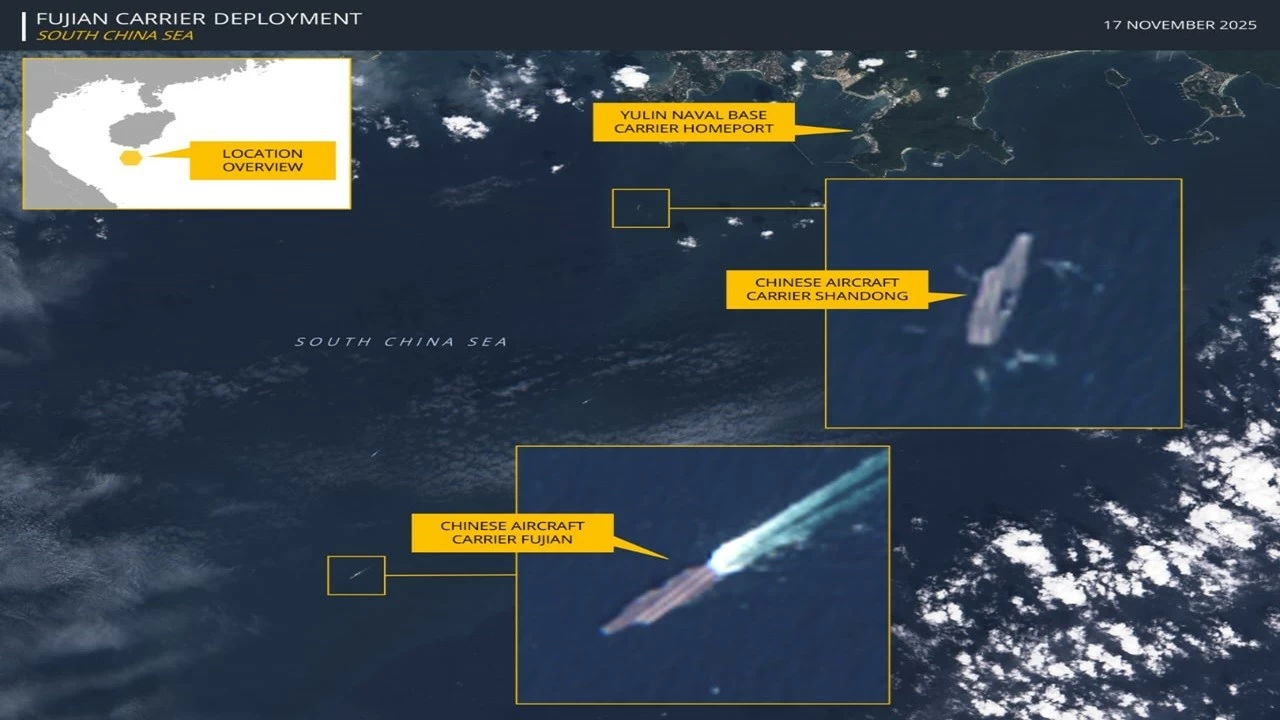

By signing in or creating an account, you agree with Associated Broadcasting Company's Terms & Conditions and Privacy Policy.


By signing in or creating an account, you agree with Associated Broadcasting Company's Terms & Conditions and Privacy Policy.

New Delhi: China's show of maritime strength speaks volumes about its expanding territorial influence. Its assertiveness and activity continues to grow in the region. It entered a new phase in the South China Sea, with operation of two aircraft carriers -- Fujian and Shandong -- simultaneously.
India is closely watching the maiden deployment of Fujian, China’s most advanced and powerful carrier yet, whose movements could reshape the balance of naval power in the Indo-Pacific. New satellite imagery shows Fujian outside its port for the first time today.
This could be the first operational deployment of Fujian. At the same time, China’s second carrier, Shandong, has also been spotted active at sea. These once again underscore China’s growing military ambitions in the South China Sea.
China’s dual-carrier deployment comes at a time when India is boosting its naval capabilities and advancing its strategy to emerge as a key pillar of stability in the Indo-Pacific.
Fujian is China’s most technologically advanced carrier. It is equipped with an electromagnetic catapult launch system (with EMALS-like capability). This makes it a major platform for power projection across the region.
China’s deployment is also being seen as a significant signal for the Andaman & Nicobar region, the Malacca Strait, and the Indian Navy’s surveillance belt, as India maintains a close vigil on any movement from the South China Sea towards the Indian Ocean.
The simultaneous deployment of both Fujian and Shandong at sea indicates a shift in China’s naval strategy, which could strengthen its efforts to expand its presence in the Indian Ocean Region (IOR) in the coming years.
Recently, India upgraded its maritime surveillance system, IMAC (Information Management and Analysis Centre), which keeps a precise watch on China’s naval activities.
The Indian Navy is also enhancing maritime security in the Indo-Pacific with partner countries under its MAHASAGAR mission and the 'Preferred Security Partner' initiative.
Indigenous aircraft carriers INS Vikrant and INS Vikramaditya, along with P-8I maritime patrol aircraft and sea-based surveillance systems, significantly boost India’s real-time monitoring capability against any Chinese deployment.
The deployment of China’s Fujian at sea could open a new chapter in the Indo-Pacific power balance. Indian defence agencies are monitoring the movement closely, especially at a time when Chinese submarines and survey ships have increased their presence in the Indian Ocean.
China’s dual-carrier activity is not only a regional show of strength but also a strategic signal to India and its partner countries. In the days to come, its impact may become evident in India’s maritime strategy, joint exercises, and naval deployments.
It highlights the urgency that India should show to enhance maritime surveillance and bolster naval preparedness. The development also means that India should be wary while dealing with China as both countries look for more disengagement in the border areas.












